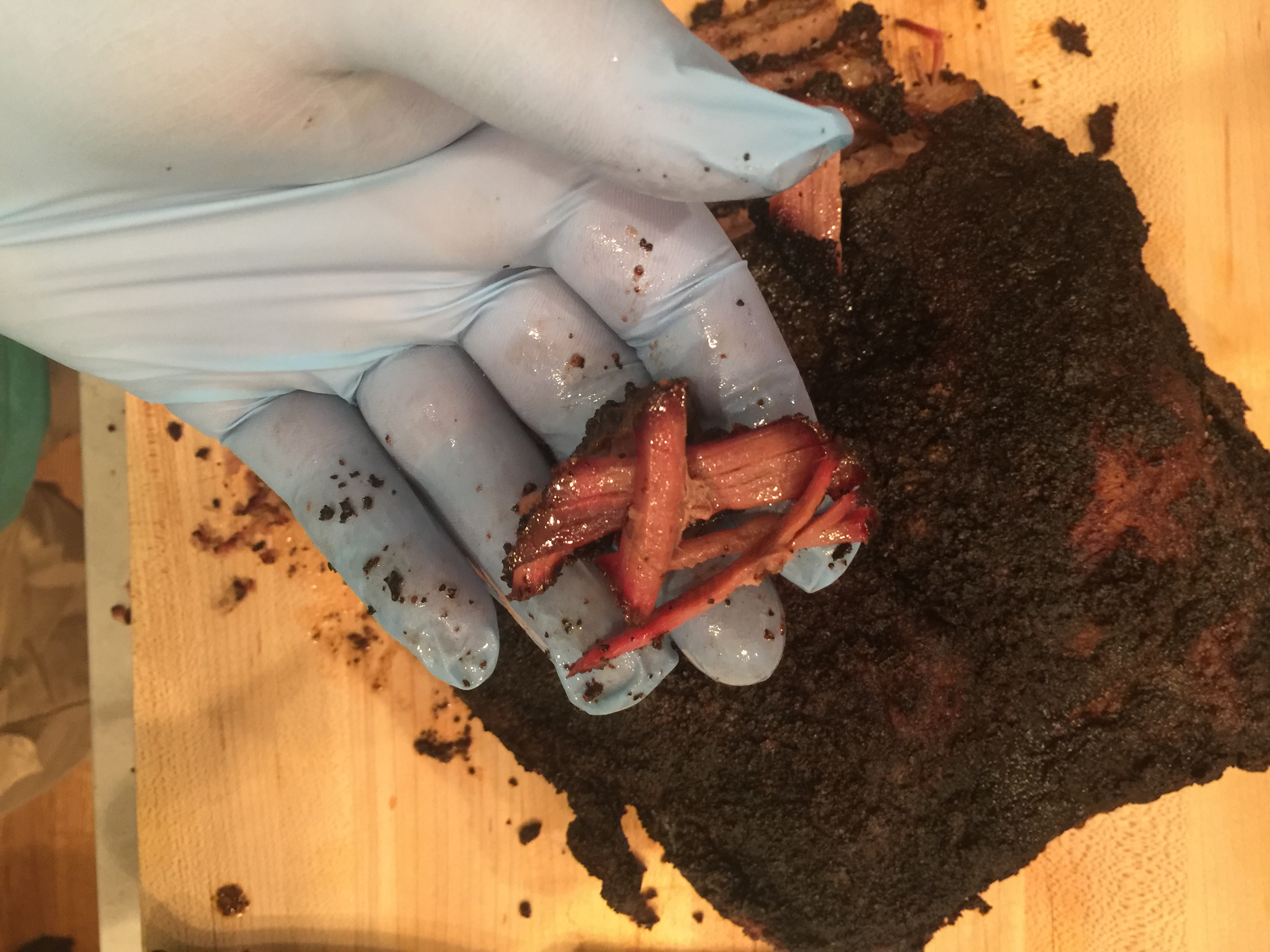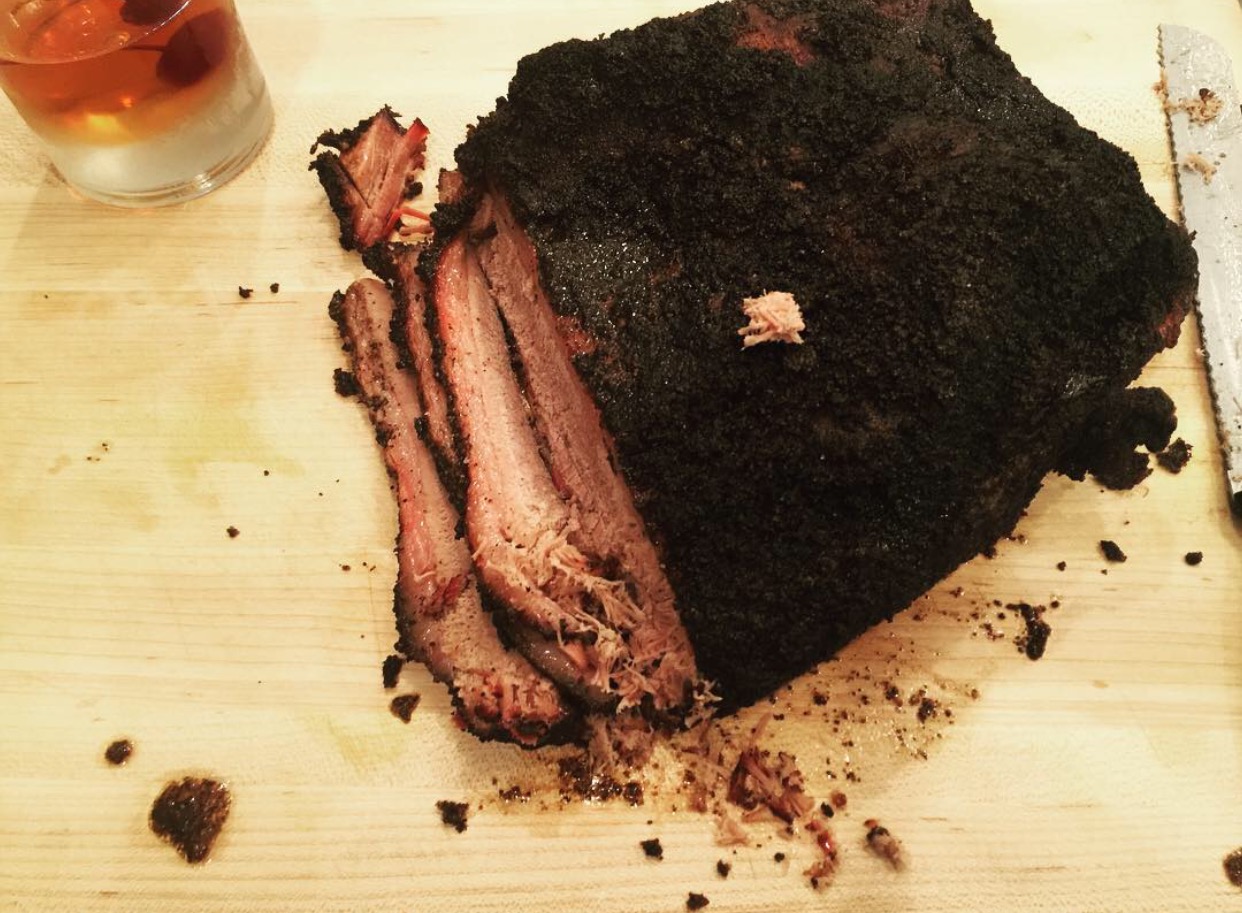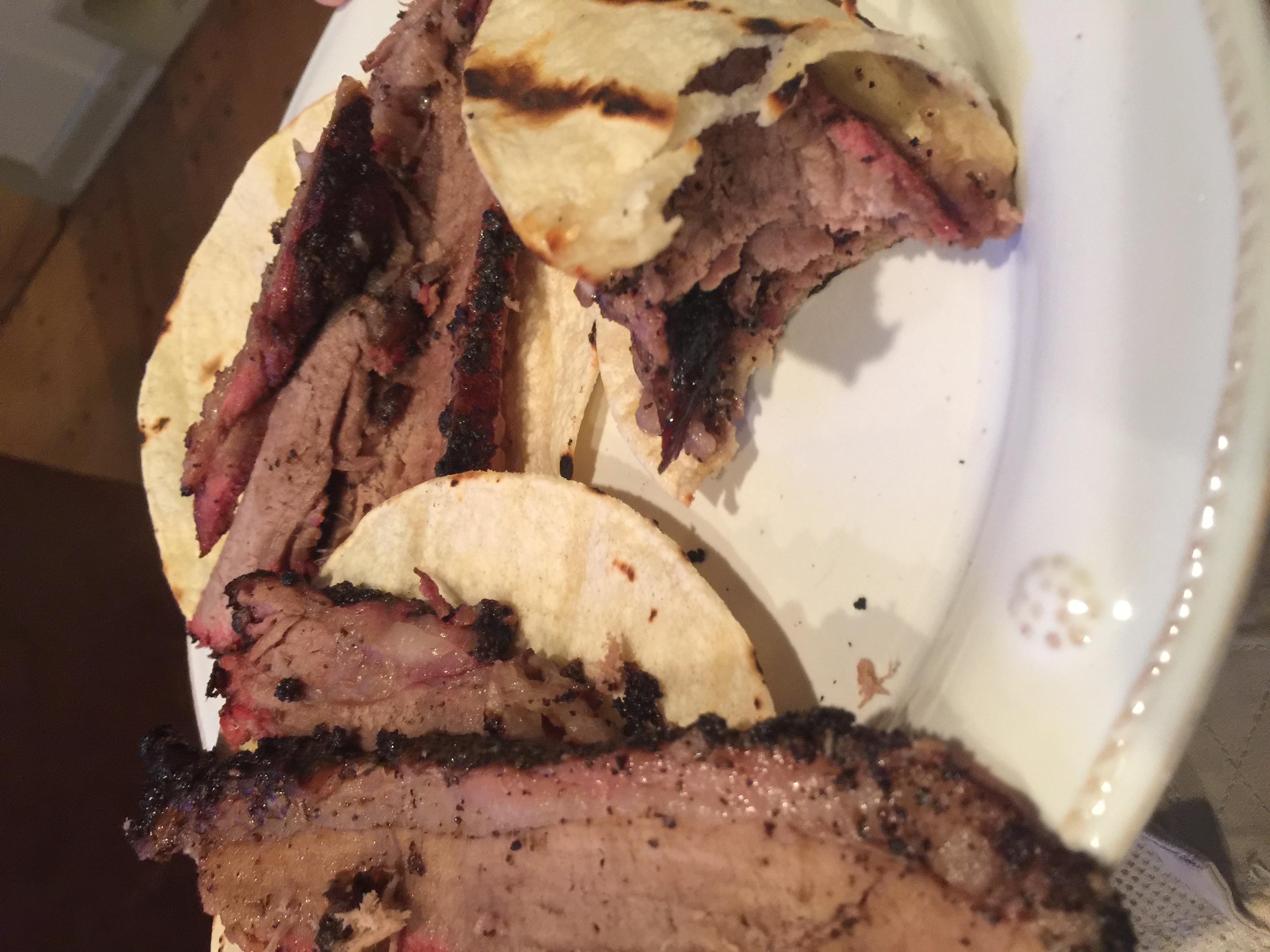26th Aug 2016
Grill Wars: Big Green Egg Wins (For Now)
Grill Wars.........2 Grills, 3 Rounds, Same Food, Same Preparation, 1 Winner......this is #grillwars
Brisket is tough. Yes, that's a barbecue pun. Even some of the best weekend chefs stay away from it due to how challenging it can be to get right. Get the temperature on your grill too hot or too inconsistent and the meat will dry out easily. Get the rub wrong and the natural beef flavor can be masked and even worse, the meat can tighten up on you even if your temp is on point (more puns).
We're not immune to these issues. After totally screwing up two perfectly good pieces of brisket by overcomplicating the rub and not adhering to the #1 rule in BBQ, constantly checking your temp, we ended up with two briskets from the Big Green Egg and 22" Weber Kettle that simply we're good. The meat was tough and the bark was, well, bad.
But not to fear. We started over by getting two more briskets and keeping things simple. Just salt, black pepper, Fogo Charcoal, and some oak chunks. That's all you need for brisket, nothing more, nothing less. Just keep it simple, a 50/50 blend of salt and course black pepper (Aaron Franklin prefers this as well), and sit outside with a beer in hand if you just have to to ensure the temp stays consistent.
We put a brisket on the Big Green Egg and the Weber Kettle at 260°. Some folks say brisket absolutely must be cooked super low and slow, getting your grill to stay at 225° or even less and cooking it for upwards of 15, 18, sometimes even 20 hours. While that certainly is fine, we cooked ours (and continue to do so) a bit higher at 260°. The key to good brisket, outside of not overthinking the rub, is consistent temperature, regardless of if that temp is 225° or as high as 280°. Just be sure to keep things under 290° and keep it consistent.
Another method that we use (as does Aaron Franklin......are you seeing a trend here?) is wrapping the brisket in butcher paper during the "stall". If you've read any articles or cookbooks on how to get brisket right, you've heard of this point in the cook where the meat simply doesn't want to an internal temp higher than about 175°. Doing this during the "stall" will help the meat get up in temp. We wrapped ours when things stalled out at 177° and let the meat come up to 195°. Some like to get above 200° once wrapped.
The result? The winner of #grillwars in this third and final round? The Big Green Egg takes the cake.
The moisture content on the "Egg brisket" was simply much better than that of the "Weber brisket". This isn't too say that "Weber brisket" was bad, it just didn't have the flavor and moisture the "Egg brisket" was packed with. Keep in mind, we use the exact same fuel, wood smoke, temperature, and rub, so the moisture content and pure flavor is influenced by the grill, not factors we can control. We think that in this round, and for this first installment of #grillwars, the Big Green Egg simply held the most consistent temperature throughout the cook, which was about 8 hours. While we can control the temp on the Weber kettle quite well, there was still minor fluctuations throughout the cook that can take away from getting brisket right.
If you follow our Instagram account @jjgeorgeoutdoor, you'll see just how moist the "Egg brisket" was.




